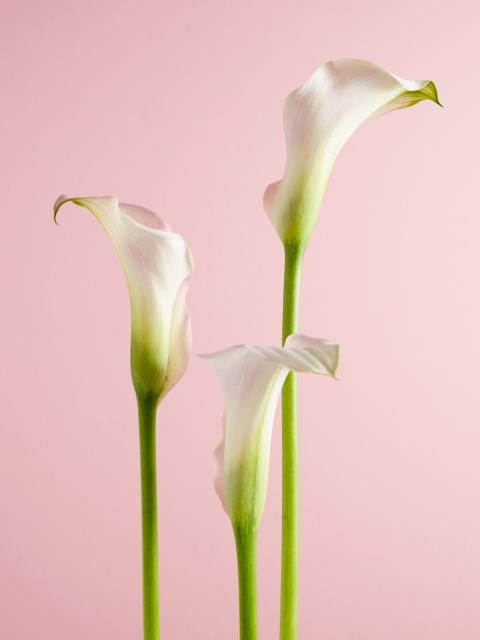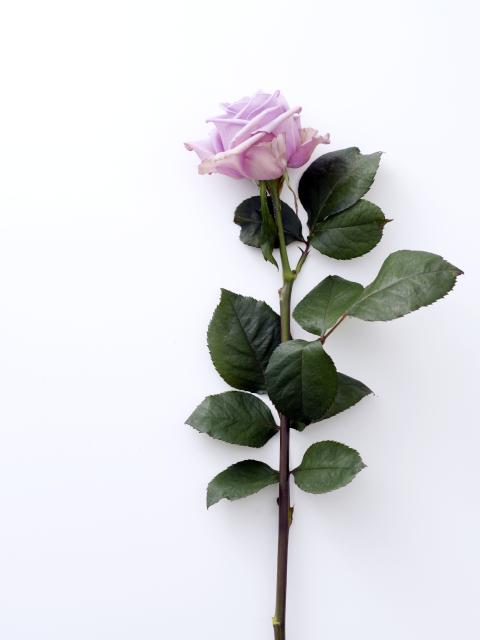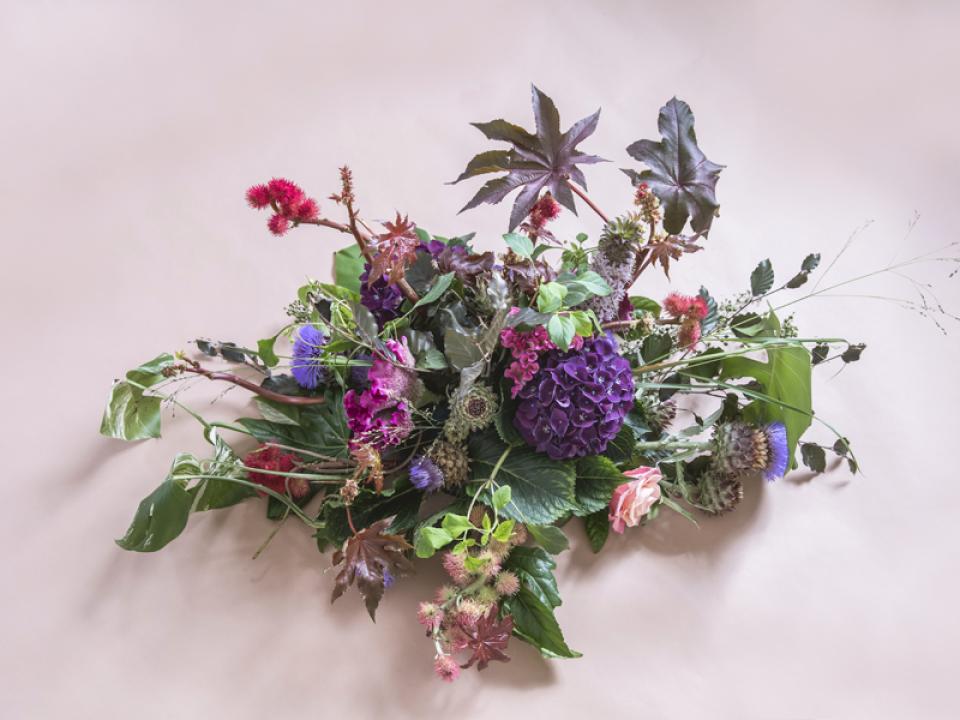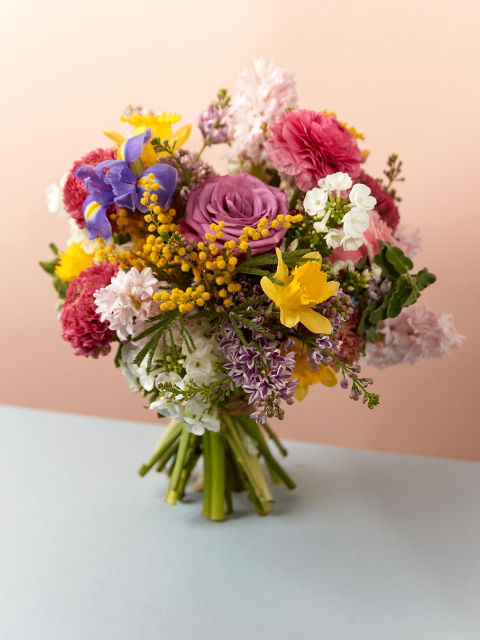flowers for funerals
There are no strict rules or etiquettes for what flowers you can or cannot give during a funeral. Above all, it is important that the bouquet or flower you choose suits you and the deceased. Flowers tell a story about someone and that story should take centre stage. If you're finding it difficult to choose, there are a number of things to keep in mind:
- Let the flowers you give express a memory. This is especially appropriate if you associate a specific flower with a specific person, such as how the hydrangeas in your grandmother's garden that always remind you of her. Or you could reference flowers that were gifted to you, such as a bunch of pink roses that your partner always gave you for your anniversary.
- Choose the favourite flower or colour of the deceased. If your loved one had a favourite colour of scent - perhaps always wearing a specific floral perfume, for instance - show your love and appreciation by giving those flowers at the funeral.
- Make your choice of funeral bouquet based on the symbolism of the flowers. For inspiration, take a look at the ten flowers below which have very appropriate symbolism for solemn occasions.

Alstroemeria
Alstroemeria symbolises a long-lasting friendship. All six petals of alstroemeria stand for a different valuable quality: understanding, humour, patience, compassion, decisiveness and respect. This beautiful flower is a good choice when composing a funeral bouquet at the death of a close friend. It lasts a long time once cut, as an additional advantage.

Calla
Calla represents purity, sympathy and beauty. The shape of the flower, with its stylised ornate calyxes, lends itself well to a horizontal funeral arrangement. With its stylish yet serene look, it's a good choice for a funeral bouquet.

Chrysanthemum
White and yellow chrysanthemums are widely used to say goodbye, particularly in Asia as the flower there symbolises immortality and happiness. In Europe, too, the chrysanthemum has beautiful symbolism, meaning 'golden lucky flower'. This symbolism is centuries old and started when the flower was named. Chrysanthemum is derived from Greek: 'chrys' means gold and 'anthemom' means flower.

Cymbidium
This stylish orchid is a special gift for friends in China, because Cymbidium symbolises a valued and respected friendship. Cymbidium is thus a perfect flower to say goodbye to a beloved friend. You can recognise the flower by its long flower spike with red, purple, pink, orange, yellow or multi-coloured flowers.

Dahlia
Dahlia symbolises wealth, , strength and the message ‘forever yours’. This latter in particular is lovely message for a deceased partner. In addition to powerful symbolism, dahlias have a strong look with its striking, colourful appearance in many different shapes and colours.

Hydrangea
Hydrangea symbolises gratitude, grace and beauty. The colours of the hydrangea represent love, harmony and peace, making it a good flower for a funeral bouquet. It looks great either in a mono-bouquet made up solely of hydrangeas or in a more mixed arrangement.

Lily
You were probably expecting to see the lily in this list. It symbolises transience and the flower’s pure look expresses emotions in times of loss and mourning. The lily is considered one of the most beautiful flowers worldwide and is often used in funeral bouquets and funeral arrangements. White lilies are most commonly used for funerals because of their serene look.

Lisianthus
Lisianthus represents appreciation, gratitude and charisma. With this flower, you say 'thank you' to the deceased and express your appreciation for that person. The flower has an elegant, rose-like appearance and comes in many colours. The petals are soft and delicate, but at the same time the flower is very strong and is known for its long-lasting flowers.

Orchid
The orchid symbolises pure friendship and - just like the Alstroemeria - is a fitting flower if you need to say farewell to a beautiful friendship. Orchids come in all sorts of colours, shapes and sizes, making this classic, elegant beauty suitable for almost any mourning bouquet or funeral arrangement.

Rose
If there’s one flower that expresses love, it's the rose. This makes it the perfect choice to commemorate a deceased loved one. The rose shines in every mourning bouquet and funeral arrangement, but is also suitable to take to a funeral as a single stem. Did you know that every colour of rose has its own meaning? For instance, red roses stand for love and passion, yellow roses for friendship, white roses for purity and pink roses for admiration and sympathy.
CREATING A FLORAL ALTAR: IDEAS AND TIPS
A thoughtful way to keep memories of your loved ones front and centre is to make an altar: a place in your home where you collect precious things that remind you of the person you miss. Think photos, holiday finds, notes and flowers that stir memories, either fresh or dried ones or flowers from the funeral or memorial event.
You could place your loved one's favourite flowers on your memorial altar each week as a ritual, or you could incorporate flowers into other ways to keep their memory alive. For inspiration, take a look at our DIY for making candles with flowers.

HOW TO DRY FLOWERS
If you'd like to save the flowers from the memorial, it's a good idea to dry them. This is simple to do yourself and is an easy way to preserve these meaningful blooms. You can either press the flowers flat or keep the shape intact. Drying flowers between the pages of a book or between a press will flatten them, making them suitable for framing. You can also air dry them, in the oven or in a cardboard box, which will help them keep their shape and make them suitable to keep in a vase. There are lots of ways to display dried flowers depending on your preference.

FLOWERS FOR THE FAMILY AND FRIENDS OF THE DECEASED
It's a extremely nice gesture to provide funeral attendees with a small favour to give them a lasting reminder of the person who's passed. This could be a memorial card, photo or flower seeds or dried flowers to keep or grow, such as forget-me-not seeds or a single stem of the person's favourite flower.
MOURNING WITH FLOWERS IN OTHER CULTURES
The use of flowers at a funeral is centuries old. As far back as ancient Egypt, flowers were laid in the tombs of pharaohs. Today, bereaved people all over the world still use flowers in funeral rites to give shape to grief, farewells and memories. Exactly how this is done varies not only from funeral to funeral, but also from culture to culture. Should you be invited to a funeral abroad, it's wise to find out in advance which flowers are appropriate or inappropriate.
- Flower wreaths in Hawaii: 'lei', or floral wreaths, are an important part of Hawaiian culture. At funerals, the wreath is draped on a photo of the deceased or over the coffin. A lei is often lain in a place that was important to the deceased, or flowers are thrown into the water as a way of saying goodbye. Next of kin often wear a wreath of flowers out of love and honour. Relatives are also often given wreaths by those involved in the funeral. Tropical flowers such as anthurium, strelitzia and orchid play an important role in funerals in Hawaii.
- Flowers in Mexico: In Mexico, people believe that the soul of the deceased lives on. The coffin stays at home, where people stop by for a final tribute to the deceased. They place flowers in the coffin and bring drinks and food for the family, who watch over the deceased for days. On 1 and 2 November, Día de los Muertos (Day of the Dead) is celebrated in Mexico where the life and living of deceased loved ones is celebrated. In the period around those days, people clean the graves of loved ones and decorate them with flowers. Traditionally, the bright orange and yellow flower 'Cempoalxochitl' (pronounced cem-pa-su-chil) takes centre stage on this day. This 'flower of the dead' can be found everywhere, on altars, around pictures of the deceased, as wreaths and flower crowns and as grave decorations. It's believed that the souls of the deceased return to earth on Día de los Muertos. The flowers serve as a visual and scented lure, helping the spirits of the deceased find their way to their families.
- White and yellow flowers in Japan: Buddhism assumes reincarnation, or life after death. Japanese Buddhists ensure that the dead enter their next life well prepared. In addition to clothes and garlands, coins are placed in the coffin. Before the cremation, attendees place flowers in the coffin. White and yellow chrysanthemums and lilies are especially appropriate, as these flowers are associated with immortality, purity and hope in Japan. Brightly coloured flowers are taboo at funerals in Japan.










